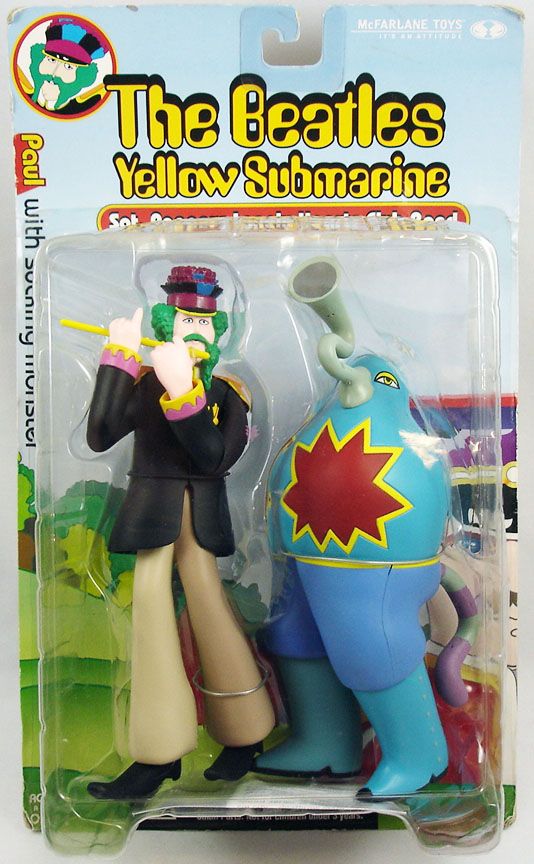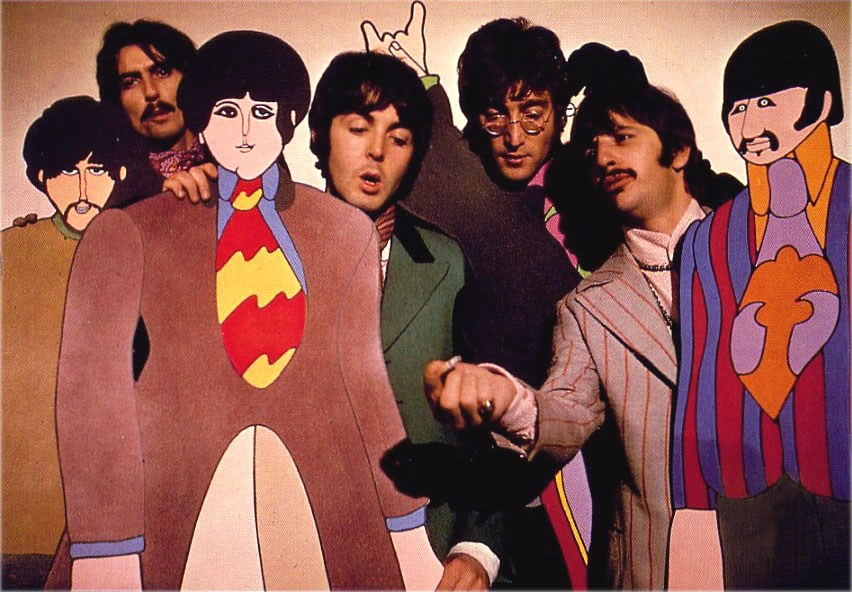

The Beatles are represented by their cartoon images from the Yellow Submarine film. The press kit also included two 8″ x 10″ black and white glossies of each of the artists featured on the records.


By coincidence, Capitol had re-tooled its pressing plants for slip guard singles at the beginning of the month, so the Apple singles were among the first Capitol manufactured titles to take on the new look. Although the tiny grooves appeared to be an innovation of Apple, several British labels had been pressing discs with slip guards for years. The singles also had something new to most Americans - a slip guard consisting of 360 interlocking serations surrounding the label.
PAUL MCCARTNEY YELLOW SUBMARINE CARTOON FULL
While most records had the same label design on both sides, these discs had a full green apple on one side and a sliced apple was its exposed white innards on the other side. The sleeves were not the only thing different about the singles. Peeking out of the center of each sleeve was a record label covered with a Granny Smith green apple. The other three sleeves merely said “Apple” in the same eye-catching green script letters. The group’s name was in white and Apple in green. One proclaimed “The Beatles on Apple” in an attractive script font. In contrast to the white envelope and folder were four distinguished-looking black center cut record sleeves. Inside was a treasure of sound, visuals and text. Upon ripping open the envelope, the recipient encountered a glossy cream colored folder with a large Apple logo on its front side. įor those disc jockeys who had been monitoring Apple’s progress by reading trade magazines, the arrival of the classy looking white envelope with the Apple logo was truly a magic moment. The lucky recipients of these envelopes would be among the first people in America to see and hear what the Beatles new Apple venture was all about. The post mark indicated that the package cost a then hefty eighty cents to air mail. The logo was a solid green circle with a white apple in the center with the word “Apple” in white script above the stem. The kits were packaged in white envelopes with an Apple logo in the upper left corner serving as the return address. On August 22, 1968, Apple Records’ Los Angeles office sent press kits to radio station program directors across the United States.

From Apple’s American Debut – The Original 1968 Press Kit | : In the US, a different press kit was sent to radios. “ Thingumybob / Yellow Submarine” by Black Dyke Mills Band “ Sour Milk Sea / The Eagle Laughs at You”, by Jackie Lomax “ Those Were The Days / Turn, Turn, Turn” by Mary Hopkin The four first Apple singles were: Single “ Thingumybob” was one of the four first singles published by Apple Records and a limited edition press kit, called “ Our First Four“, was issued in the UK. Derek Taylor – From the US press release Paul McCartney with The Black Dyke Mills Band, 1968. March to them yourselves across the living room, be young again, and brave. The ‘B’ side is ‘Yellow Submarine,’ one of the great youth marching songs of all time played as a march as it is begged to be played. The results are strong and amazingly contemporary for within the song there are those strange, unique touches of the Beatle-flair. Up from exciting London to industrial Bradford in the north where, in an ancient city, he recorded The Black Dyke Mills Band in their home town.
PAUL MCCARTNEY YELLOW SUBMARINE CARTOON TV
When Paul McCartney was faced with the challenge of producing his theme song for the London TV show ‘Thingumybob’ he decided to forget studio musicians, and the sophistication of formal studios and took himself up the trunk road which splits England from top to bottom. Paul McCartney – From Melody Maker, July 13, 1968 But even so I have enjoyed the session so much that I’d like to do another, bigger piece with a brass band.


 0 kommentar(er)
0 kommentar(er)
